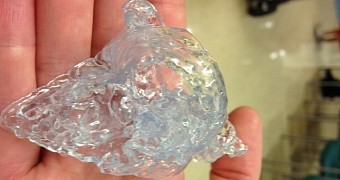Models of organs and bones have been used in more than a few surgeries so far, but each instance was just an experiment, not part of an already realized trend. Now, though, at least one 3D printed object has been validated as actual medical equipment.
We are referring to the 3D printed cardiovascular HeartPrint from Materialise, the object that saved the life of a baby not that long ago.
The model was made based on scans of the actual heart and showed the surgeons where the many holes riddling the heart were.
It allowed them to repair the damage in a single surgical intervention and ensured the child would live a relatively normal life. That heart print has now been labeled a Class I medical device in the United States of America and European countries.
In fact, it wasn't just that one heart, but all models in the HeartPrint collection of 3D printed anatomical replicas.
How the models are made
Basically, Materialise takes MRI scans and other medical image data and turns it into three-dimensional models of the organs that were scanned.
Mimics Innovation Software plays a big role in the production of the models themselves, then the 3D printer takes over and makes a physical version of the virtual object.
Congenital heart condition and injuries that would normally require doctors to perform several successive surgeries will be able to be healed, or at least treated, during a single session.
It dramatically reduces the risk of the patient's life expiring between interventions, as well as the hospital stay.
The best part is that each model is made based on the scans performed on specific patients. Custom-produced as it were. It's no wonder that 3D printed organ models are going to be a standard part of surgery planning from now on.
What Class I devices are
The FDA uses the Class system to indicate what instruments and devices can be legally used by medics. Class 1 are low-risk objects, and thus, don't need to go through as much red tape as others. Mostly because they don't play a direct role in the surgeries themselves.
So far, though, no one besides Materialise is addressing the need for models that can help in planning and practicing complex cardiovascular procedures, or even with diagnostics. Then again, 3D printing technology is relatively young so there's plenty of time for others to rise to the occasion. If not for heart surgeries, then for other things.

 14 DAY TRIAL //
14 DAY TRIAL //